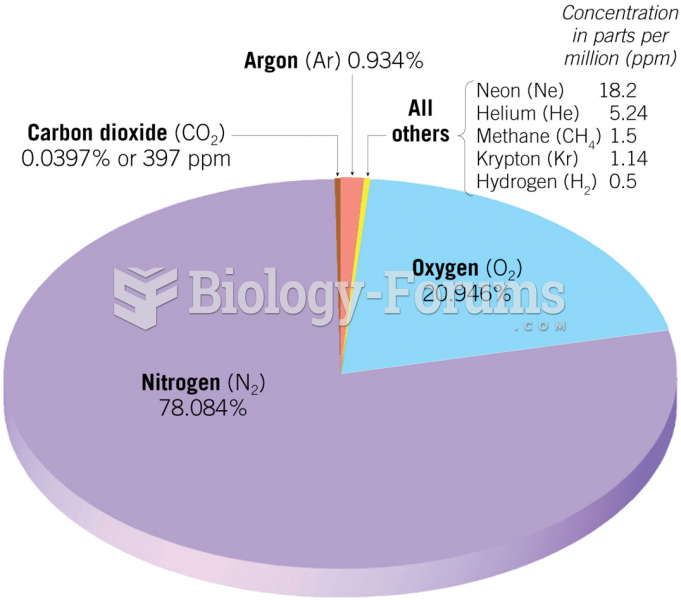Answer to Question 1
ANSWER: The atmosphere becomes more unstable as the environmental lapse rate steepens; that is, as the air temperature drops rapidly with increasing height. This circumstance may be brought on by either air aloft becoming colder or the surface air becoming warmer. The cooling of the air aloft may be due to winds bringing in colder air (cold advection), and clouds (or the air) emitting infrared radiation to space (radiational cooling). The warming of the surface air may be due to daytime solar heating of the surface, an influx of warm air brought in by the wind (warm advection), or air moving over a warm surface.
Answer to Question 2
ANSWER: The level at which clouds form is called the condensation level. Above the condensation level the rising air is saturated and cools at the moist adiabatic rate. Condensation continues to occur, and since water vapor is transforming into liquid cloud droplets, the dew point within the cloud now drops more rapidly with increasing height than before. The air remains saturated as both the air temperature and dew point decrease at the moist adiabatic rate. Inside the cloud the rising air remains warmer than the air surrounding it and continues its spontaneous rise upward. The top of the bulging cloud at 2000 m (about 6600 ft) represents the top of the rising air, which has now cooled to a temperature equal to its surroundings. The air would have a difficult time rising much above this level because of the stable subsidence inversion directly above it. The subsidence inversion, associated with the downward air motions of a high-pressure system, prevents the clouds from building very high above their bases. Hence, an afternoon sky full of flat- base cumuli with little vertical growth indicates fair weather. As we can see, the stability of the atmosphere above the condensation level plays a major role in determining the vertical growth of a cumulus cloud. Seldom do cumulonimbus clouds extend very far above the tropopause. The stratosphere is quite stable, so once a cloud penetrates the tropopause, it usually stops growing vertically and spreads horizontally. The low temperature at this altitude produces ice crystals in the upper section of the cloud. In the middle latitudes, high winds near the tropopause blow the ice crystals laterally, producing the flat anvil-shaped top so characteristic of cumulonimbus clouds.







